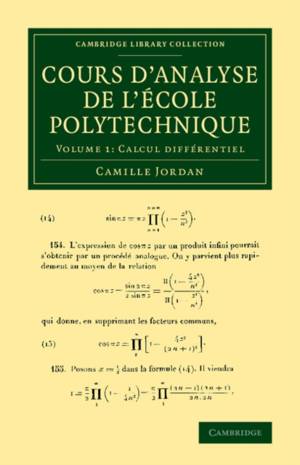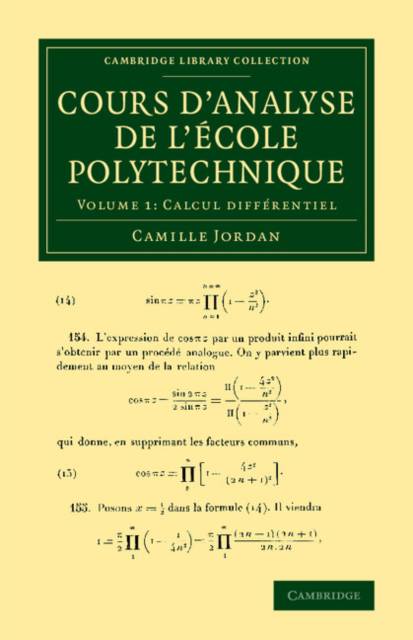
- Afhalen na 1 uur in een winkel met voorraad
- Gratis thuislevering in België vanaf € 30
- Ruim aanbod met 7 miljoen producten
- Afhalen na 1 uur in een winkel met voorraad
- Gratis thuislevering in België vanaf € 30
- Ruim aanbod met 7 miljoen producten
Zoeken
Cours d'Analyse de l'Ecole Polytechnique: Volume 1, Calcul Différentiel
Camille Jordan
€ 91,95
+ 183 punten
Omschrijving
One of the great algebraists of the nineteenth century, Marie Ennemond Camille Jordan (1838-1922) became known for his work on matrices, Galois theory and group theory. However, his most profound effect on how we see mathematics came through his Cours d'analyse, which appeared in three editions. Reissued here is the first edition, which was published in three volumes between 1882 and 1887. While highly influential in its time, it now appears to us a transitional work between the partially rigorous 'epsilon delta' calculus of Cauchy and his successors, and the new 'real number' analysis of Weierstrass and Cantor. The first two volumes follow the old tradition while the third volume incorporates a substantial amount of the new analysis. Ten years later, the even more influential second edition followed the new point of view from its start. Volume 1 (1882) covers differential calculus.
Specificaties
Betrokkenen
- Auteur(s):
- Uitgeverij:
Inhoud
- Aantal bladzijden:
- 400
- Taal:
- Frans
- Reeks:
Eigenschappen
- Productcode (EAN):
- 9781108064699
- Verschijningsdatum:
- 21/11/2013
- Uitvoering:
- Paperback
- Formaat:
- Trade paperback (VS)
- Afmetingen:
- 140 mm x 216 mm
- Gewicht:
- 503 g

Alleen bij Standaard Boekhandel
+ 183 punten op je klantenkaart van Standaard Boekhandel
Beoordelingen
We publiceren alleen reviews die voldoen aan de voorwaarden voor reviews. Bekijk onze voorwaarden voor reviews.











